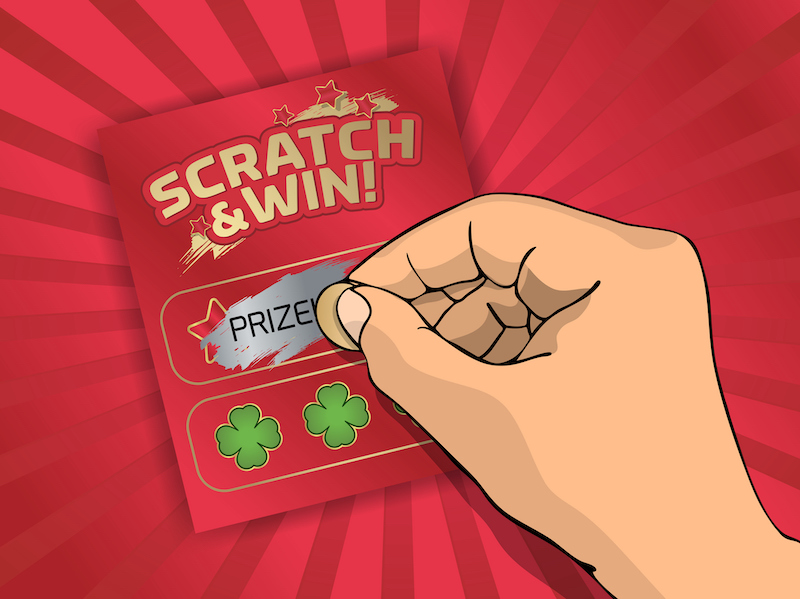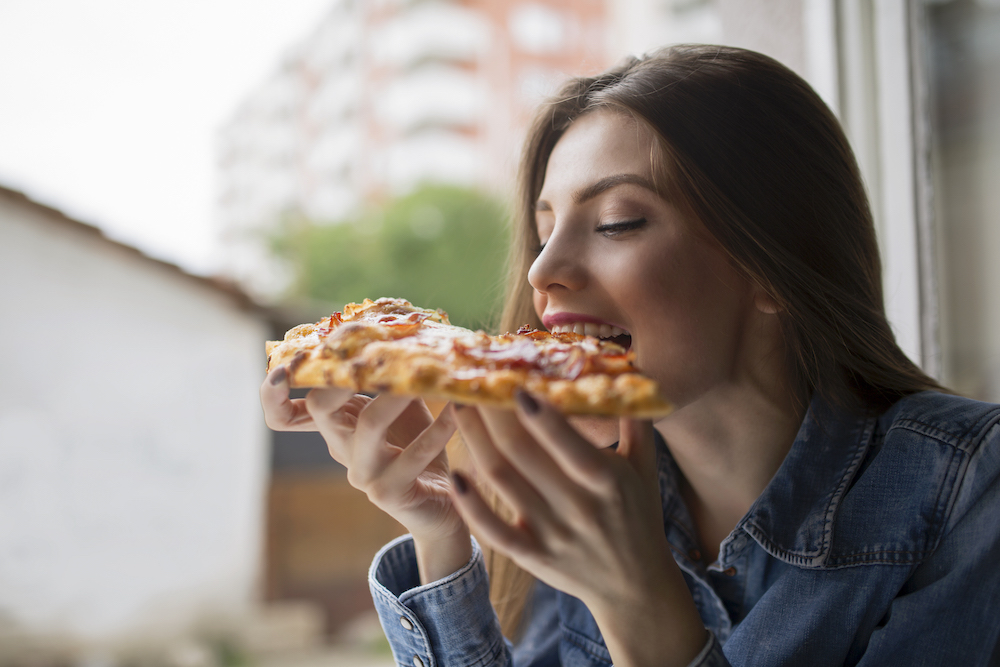- Sending out direct mail to promote your pizzeria virtually guarantees that your marketing message will be seen and read, says Josh Davis of Mail Shark.
- A large 10.5×17 tri-fold menu provides more marketing space than almost any other piece, letting you share your story with menu items, photos and more.
Related: For sample images of high-performing direct-mail pieces, click here to read our January-February 2023 feature article, “Special Delivery.”
Maybe you don’t get many handwritten letters from your friends or relatives anymore. And you probably don’t have pen pals from faraway lands. But you still check your mailbox pretty much every single day. There’s always an Amazon package to look out for, maybe a book you ordered, and, of course, bills that need to be paid. And, if it’s a really good day, you’ll find a money-saving piece from your favorite restaurant or your local supermarket.
American postal workers are still hard at work every day, making their appointed rounds. That won’t change anytime soon. And it means that direct mail is still a powerful tool for marketing a pizzeria. It always ends up in the customer’s own hands: It’s tangible, it’s real, and it has value.
For a feature article titled “Special Delivery” appearing in PMQ’s January-February 2023 print issue, we asked Josh Davis, chief revenue officer for Mail Shark, to help us delve into some specifics for creating a high-performing direct-mail piece for your pizzeria. In the following website-exclusive Q&A, Davis adds a few more tips that will help you achieve success with so-called “snail mail,” which works a lot faster than the name suggests!
PMQ: Nowadays, many pizzeria operators think they can reach their customers through social media or email exclusively. But we know that has limited impact and that direct mail remains an important tool in their marketing arsenal. Can you talk a little bit about why they need to continue using direct mail or add it back to their marketing strategy?
Josh Davis: When we look at marketing strategy, the answer to our clients is never “you should only do this.” Every business that has success with their marketing uses multiple channels to market their brand. One channel may be more effective than another, but, when done right, they all work in conjunction with each other. Here are a few reasons that direct mail is not only still effective but more effective than ever.
1. As effective as online marketing can be, the fact remains that it can be a very crowded space with a constant stream of ads that are competing, most of which you don’t stop to see as you scroll by. The mailbox is much less cluttered and guarantees that your prospect sees your marketing. You must look at your mail to decide whether to keep it or not, which guarantees that your ad is seen by the intended prospect, providing the highest read rate of any marketing channel.
Related: 5 ideas for boosting your catering business with direct mail
2. Many consumers also hold on to their mail for long periods of time, giving your direct-mail marketing message longevity and the ability to create repeat orders. We have call tracking data from a direct-mail menu, sent out by a local mom-and-pop shop, that shows multiple repeat calls from the same menu over time and calls coming over one year after the menus were sent out. This is the power of direct mail and is a win all around.
3. Direct mail is also hyper-targeted to the exact neighborhoods you want to penetrate. Social media can be hyper-targeted as well, but the difference is, not everyone is online to see your advertisements. Direct mail ensures that you touch the exact prospects you are targeting.
4. Direct mail is a great way to convert prospective customers to go online. With a strong CTA—to order online, download an app or join a loyalty plan with some incentive—it is a great way to get consumers to act and go online, allowing you to capture customer data and giving you the ability you to remarket to those customers again.
PMQ: What are the key types of direct mail every pizzeria operator needs to use in an ongoing campaign?
Davis: The good news is, there are many highly effective direct-mail paper and plastic product options to choose from. Because of this, it can be difficult to determine which is the best to use. And, to further complicate things, there isn’t necessarily a right or wrong answer.
With that in mind, one of the most effective direct mail pieces for restaurants is a large 10.5×17 tri-fold menu. If you haven’t mailed a menu, if it’s been a while since you have, or if you have just changed your pricing, mailing a menu is a smart choice. With the large format of the 10.5×17 menu, you get more marketing space than almost any other direct-mail piece. The large space gives you the ability and the ample space to really tell your restaurant’s story with menu items, pictures, etc. and show your customers exactly what you have to offer.
Another top choice are postcard magnets. Customers get them and intuitively put them on their fridge. Postcard magnets are extremely effective any time of year. However, there are a few specific times of the year that are even more prime to utilize postcard magnets. Those specific times are right before the new year—by including a calendar for the upcoming year on your magnet—and the use of sports schedules, whether it be professional or local high school teams. By adding a popular team’s schedule to a magnet, it provides a lot of incentive for customers to hold on to your marketing.

Getty Images
Scratch-off postcards are another great option to consider. The sheer nature of scratching to win something creates excitement and forces your prospective customers to interact with your marketing. There are so many cool marketing campaigns that can be created around a scratch-off to create excitement. For example, one of the most popular is “Scratch to win FREE PIZZA FOR A YEAR.” There is typically one grand prize winner, and the rest are given some type of discount or special offer that makes them feel like they have won something. You can then use the reverse side of the card for additional offers and other content, making scratch-off postcards a powerful marketing piece. Of course, there are many other concepts, such as scratch to win free food, gift cards, etc.
One of the most unique direct-mail pieces is the plastic postcard. Plastic postcards have the same feel and thickness, like a credit card, while providing an extremely shiny/glossy finish. Plastic postcards also provide the ability to create pop-out offers that are the exact same size as a credit card and fit perfectly in a wallet or billfold, as well as key tag offers that can be popped out and put on your your customers’ keychains. The high-quality glossy look and heavy feel of plastic postcards truly differentiate them from all the other paper mail in the mailbox.
PMQ: What components should a direct-mail piece include to get the best results?
Davis: There are many obvious components that should be included on every direct-mail piece, such as your logo, contact info, etc. However, I think two of the most important are having a strategic and diversified coupon strategy that will appeal to a wide audience, and the second is to have a very clear call to action that, if possible, will lead to capturing your customers’ data.
The subject of coupons is an in-depth one and should be approached strategically, based on your product offering and demographic makeup of your market. Many times, pizzeria owners want to run coupons only offering large bundle deals that include very specific items in order to create a larger ticket. However, most markets consist of singles, couples and smaller families, not just large families that a large bundle deal would likely only appeal to.
Therefore, it’s a best practice to reduce the number of bundle deals and add other offers, such as a generic tiered-dollar-off offer that would appeal to anyone—singles, couples, small families, and even large families that want to order what they want without being forced to purchase the specific items in the bundle deal. For example, something like:
$3 off any order
of $20 or more
$5 off any order
of $30 or more
Running just large bundle deals in this case would no doubt diminish your response. Again, this is just one example. The right direct-mail marketing company will take your insight, along with the demographics of your market and marketing best practices, to create a coupon campaign that will maximize your response rate.
The second key component is having a strategic call to action. We recommend that this call to action be something like driving customers to place an order online, joining a rewards program, downloading your app if you have one, etc. All these actions lead to gathering important customer info. It’s critical that you try and gather your customers’ data, giving you the ability to remarket to these customers in the future.
Because all these actions call the customer to go online or to their phone to download something, it’s a best practice to include a QR code that easily takes them to the destination you want. Just remember to always include verbiage that explains the purpose of the QR code, such as “Scan Here to Order Online,” etc.
PMQ: Finally, what about the look and feel of the piece? Could you share a couple of design tips?
Davis: The look and feel of your marketing, of course, depends on your brand. However, one best-practice design tip, regardless of brand, should be a goal of having a clean design that is easy to read, so customers can easily scan through the content, and using a font that’s large enough that it’s legible to anyone reading.
One of the biggest mistakes we see is the inclusion of too much content in conjunction with a font that is too small, rendering it difficult to read. If something looks cluttery and is hard to read, people simply won’t read it, and that’s not what you’re trying to accomplish with your marketing. More often than not, less is more on a direct-mail marketing piece.
Another big mistake we see is the use of stock food photos that look nothing like the pizzeria’s actual food. Today’s smartphones have some of the best cameras. Take an hour or two of your time and shoot photos of your food, and, while you’re at it, take some pictures of your restaurant, staff, etc. and really personalize your marketing.













